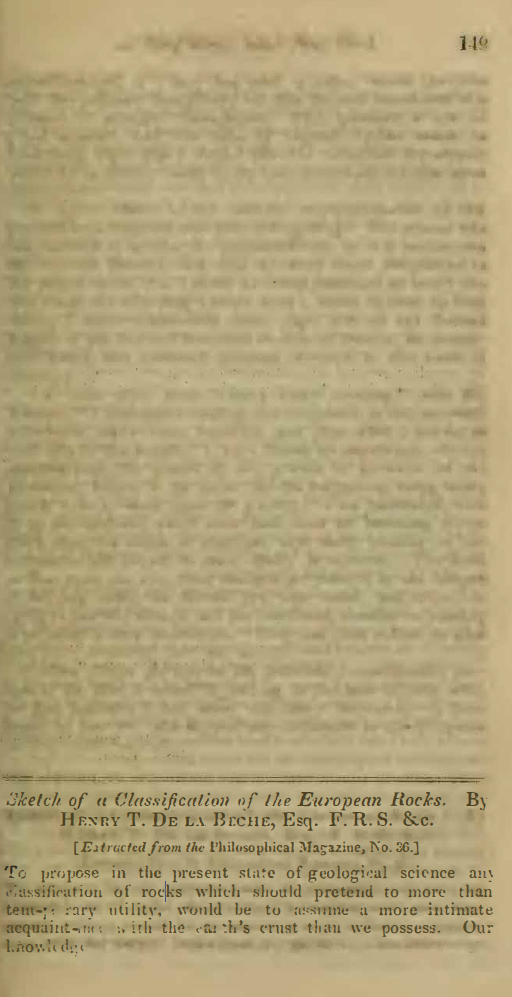Sketch of a classification of the European rocks
DOI:
https://doi.org/10.21504/saqj.12.2636Keywords:
Geological classification, European rocks, Stratified rocks, Unstratified rocks, Fossiliferous, Fossils, Stratigraphy, Igneous rocksAbstract
This paper, a "Sketch of a Classification of European Rocks," proposes a temporary, practical classification system for rocks to replace the then-common, theoretically flawed, and "erroneous" divisions of Primitive, Transition, Secondary, and Tertiary.
The author, Henry T. De La Beche, argues that the current state of geological knowledge, being limited and continually modified by new discoveries, does not yet permit a definitive, globally applicable classification. He advocates for a system based on observable characteristics rather than restrictive theories.
The proposed system divides rocks into two primary, practical classes:
-
Stratified Rocks:
-
Superior, or Fossiliferous: Divided into nine practical groups (e.g., Alluvial, Diluvial, Lowest Great Mammiferous/Tertiary, Cretaceous, Oolitic, Red Sandstone, Carboniferous, Grauwacke, Lowest Fossiliferous), characterised by their distinctive, though locally variable, organic remains and order of superposition. The author critiques the idea of uniform fossil contents globally, suggesting that local differences in temperature and creation epochs must be considered.
-
Inferior, or Non-Fossiliferous: Comprising rocks like slates and gneisses, which he notes can sometimes be mistaken for altered superior rocks.
-
-
Unstratified Rocks: Divided into Volcanic, Trappean, Serpentinous, and Granitic groups, acknowledging their igneous origin and significant role in the dislocation and elevation of stratified strata, particularly in mountain ranges.
The sketch aims to encourage geologists to adopt a non-theoretical nomenclature that reflects a more accurate and enlarged view of nature, thereby promoting the advancement of the science without making premature, universal assumptions.
Downloads

